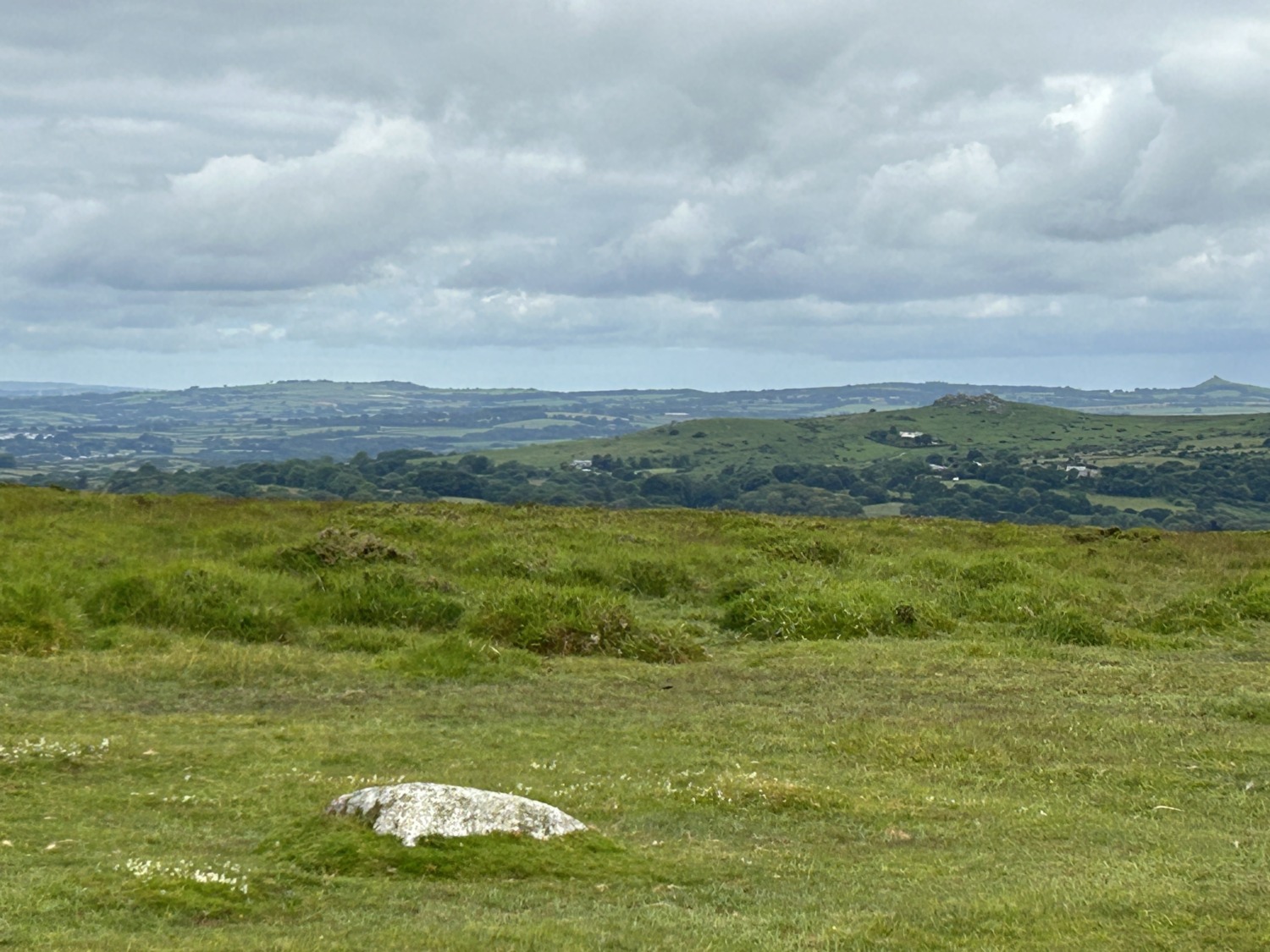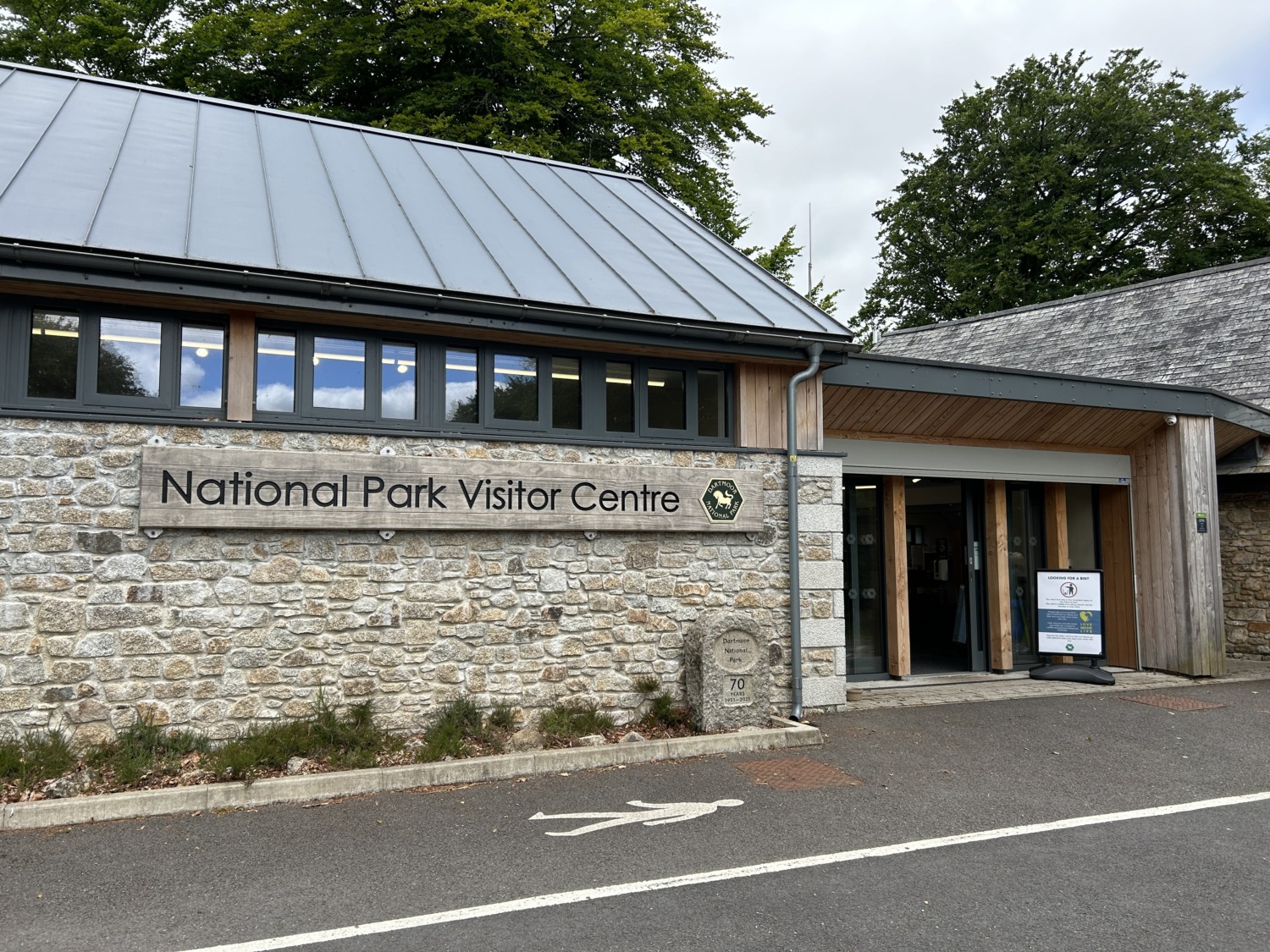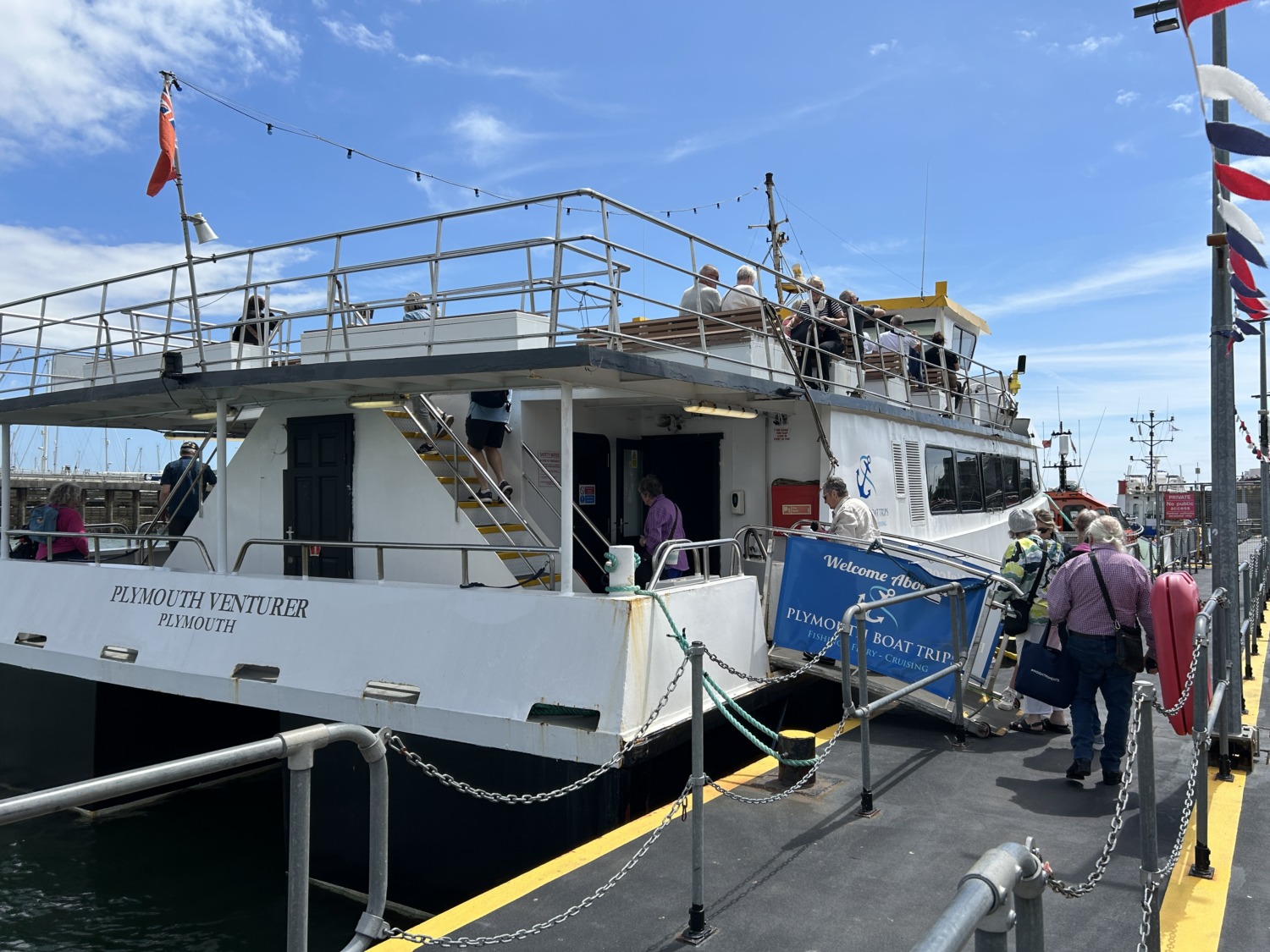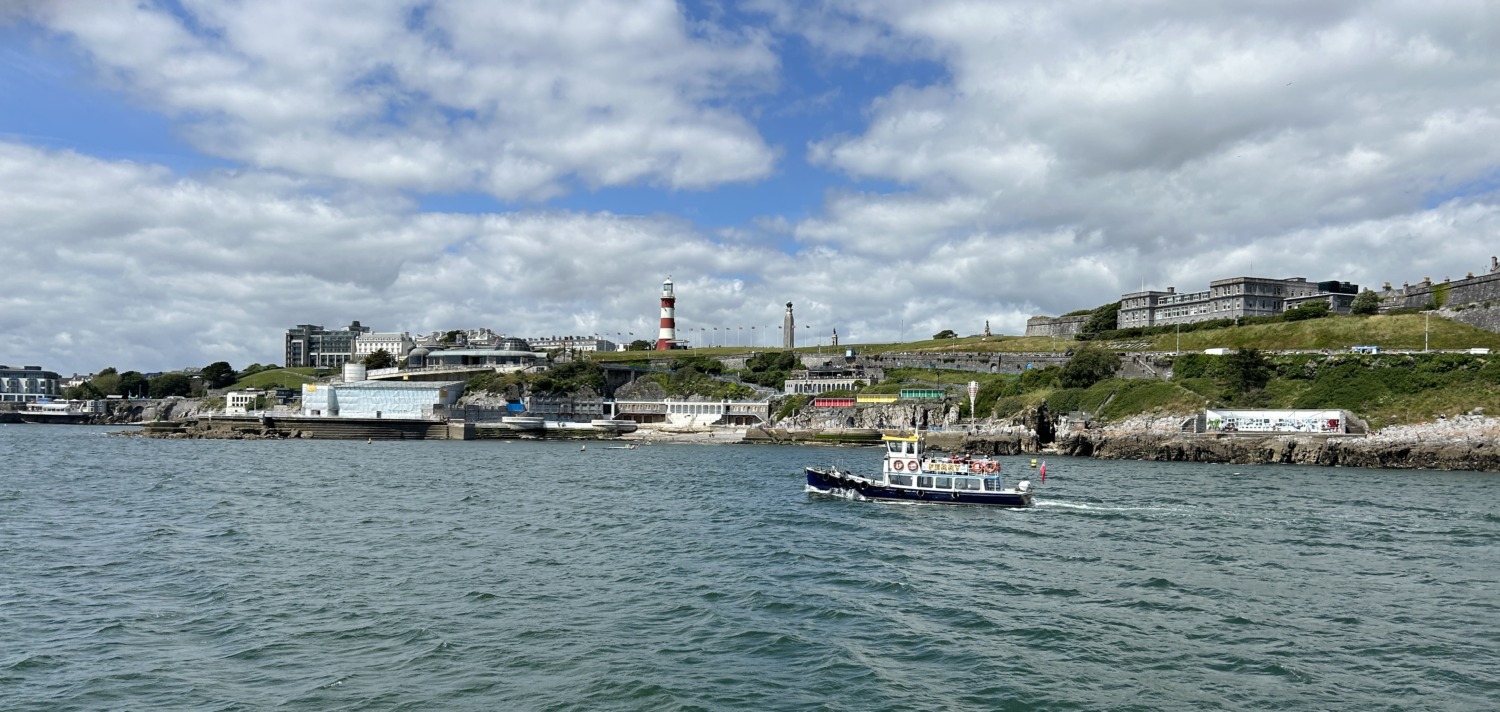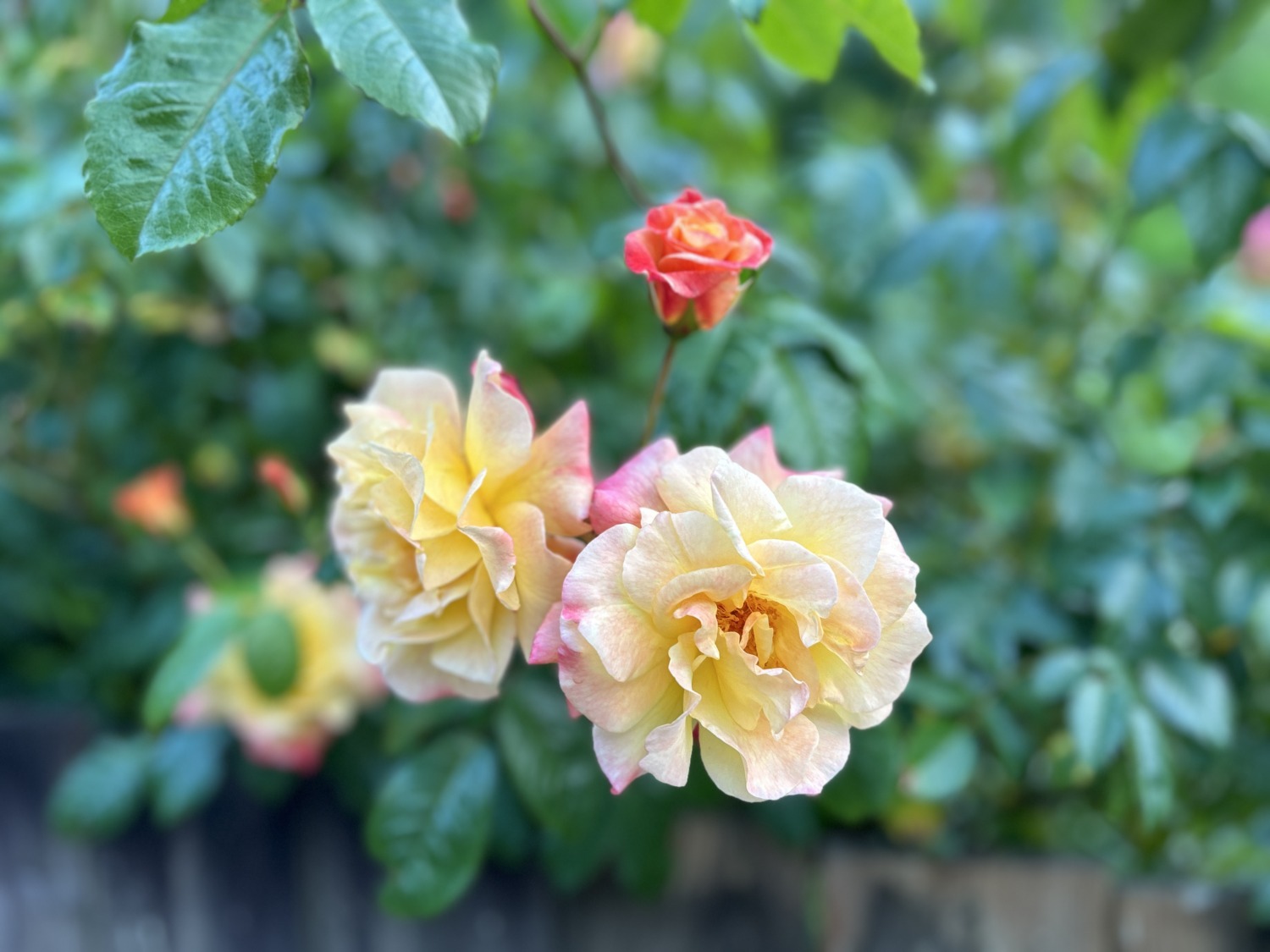The penultimate (love that word) day of our Insight Vacations Tour, we went to Dartmoor National Park and explored Plymouth. We only spent a few hours on the bus which was a very nice change.
After loading up in the morning, we met a guide named Emma, who styles herself as “Dartmoor’s Daughter.” She grew up in Dartmoor but moved away to pursue big city opportunities. As many of us do when we get older, she realized the value of the community she left and moved back. She had some wonderful stories and insight into Dartmoor National Park, but she started every one with “Would you like to hear about . . .” Tom and I were tempted to yell “no” to see what she would do. But we are a well-trained tour group and we obediently answered “yes” every time she asked it.
Dartmoor National Park covers over 350 square miles of upland in Devon. It was designated a national park in 1951, which means it is administered on a national level but the land is mostly owned privately. The ponies and sheep we saw were grazing on public land but the animals were owned by private individuals.

We drove to several scenic overlooks and took pictures of Dartmoor moors, Dartmoor ponies, and Dartmoor sheep. There were plenty of cows as well, but they were Jersey cows. The ponies predated human habitation in the moors and were tamed by the first people who lived here. We had two walks with Emma. The first was at Postbridge, where we walked over a bridge made of stone and saw an ancient bridge called a clapper bridge.
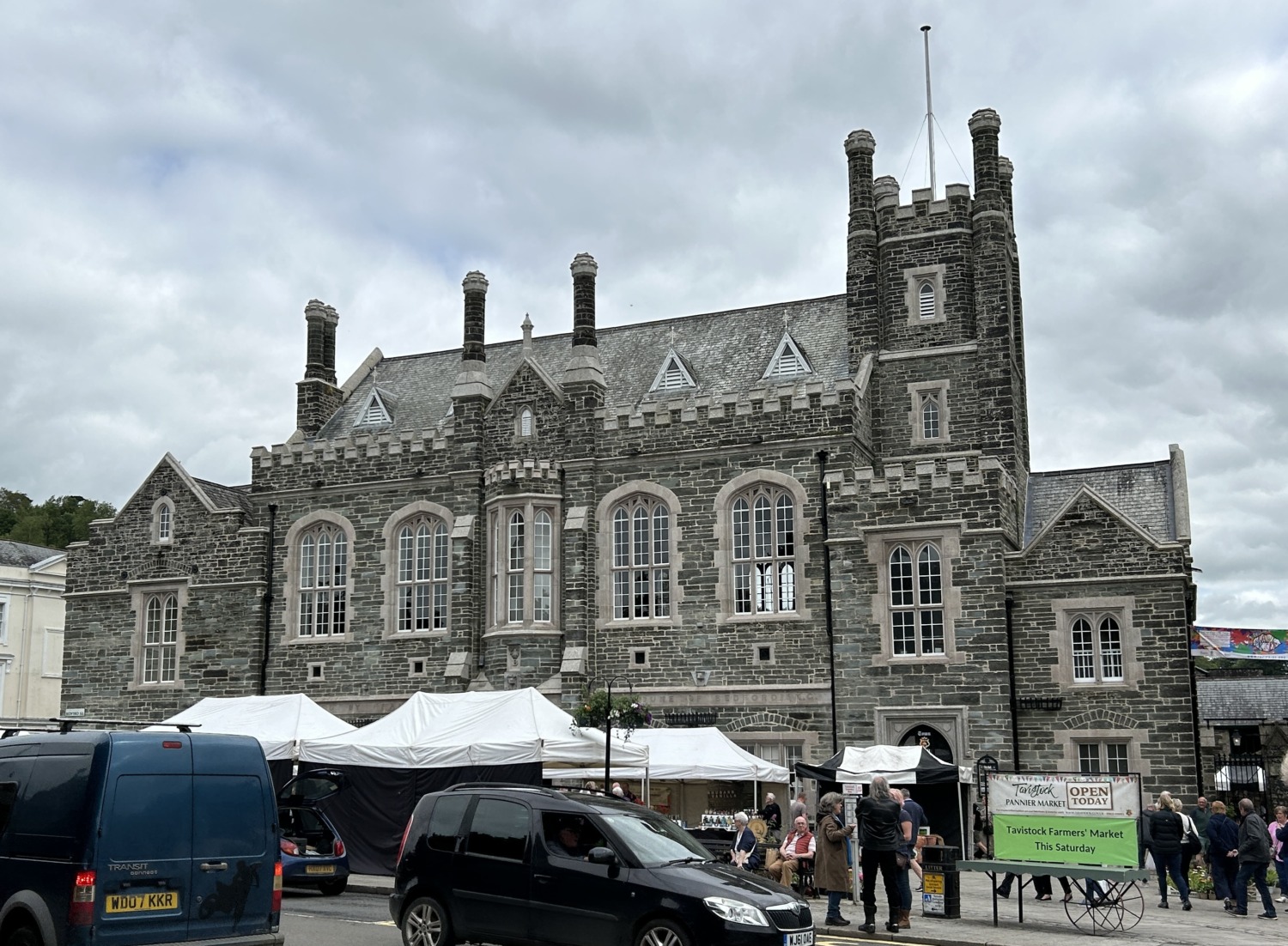
The second walk was in the town of Tavistock, at the western edge of Dartmoor National Park. We were in Tavistock on a Saturday, so there was an open-air market in addition to the covered Market Square which is open Monday-Saturday. Tavistock is a charming gateway town. I could imagine staying there and exploring Dartmoor National Park on day hikes. There were lots of B&B’s and a variety of shops and restaurants.
Tom and I enjoyed exploring the shops. There were several antique shops and one had old guns and armor. Tom was eying a few pieces but decided he couldn’t fit any of it in his suitcase. There were locally made craft goods for sale and a lovely little craft store that carried a bit of everything for crafting. I bought a beautiful skein of yarn, hand-dyed in Devon, that will make great socks. We also bought and shared a Chelsea bun which was delicious.
When our tour of Dartmoor National Park was over, we returned to Plymouth and headed down to the Barbican. The Barbican is the name given to the original, historical Plymouth harbor.
The present Barbican district is roughly equivalent to the location and size of the medieval walled town of Sutton, located where Plymouth is now. A barbican is a fortified gate and refers to the Plymouth Castle gate which guarded the entrance to the harbor. Plymouth Castle was replaced by the Royal Citadel which now stands on the promontory over the harbor.
Many old and significant buildings were demolished during the late 19th and first half of the 20th centuries. The buildings had decayed into unsanitary and overcrowded slum tenements. Modern buildings sit side-by-side with medieval and Elizabethan buildings.
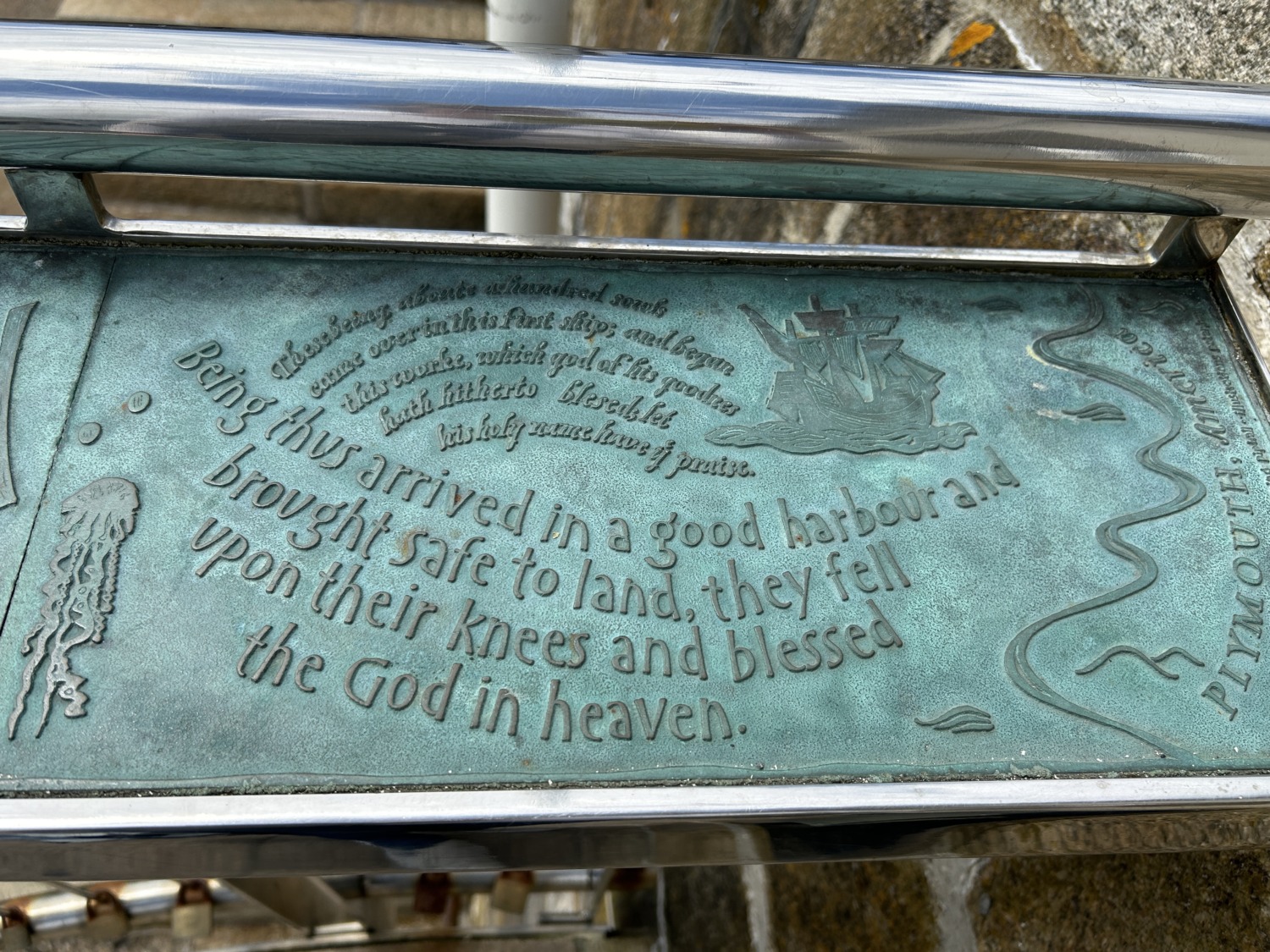
Tom and I were especially interested in the Mayflower history. The Mayflower carried colonists to North America in 1620. One of my ancestors, Edward Doty, was on the Mayflower. We saw the Mayflower Memorial and lots of other memorials to emigrants that left from Plymouth Harbor. The first emigrants to Australia and New Zealand sailed from Plymouth Harbor.
While we were at the Barbican, we went looking for lunch. Usually we find a pasty to share, but Tom and I were both tired of pasties. I told Tom as we were walking along the street with all the restaurants on it, “I just want a pulled pork sandwich.” He laughed and told me I would never find it. When we got to the end of the street, there were a couple of food trucks by the harbor. One of them was Farmer Jon’s, serving fresh-from-the-farm pulled pork and beef brisket. The pulled pork was so fresh it hadn’t arrived from the farm yet, so we ordered a brisket bap (roll) to share. We also got coleslaw and fries.
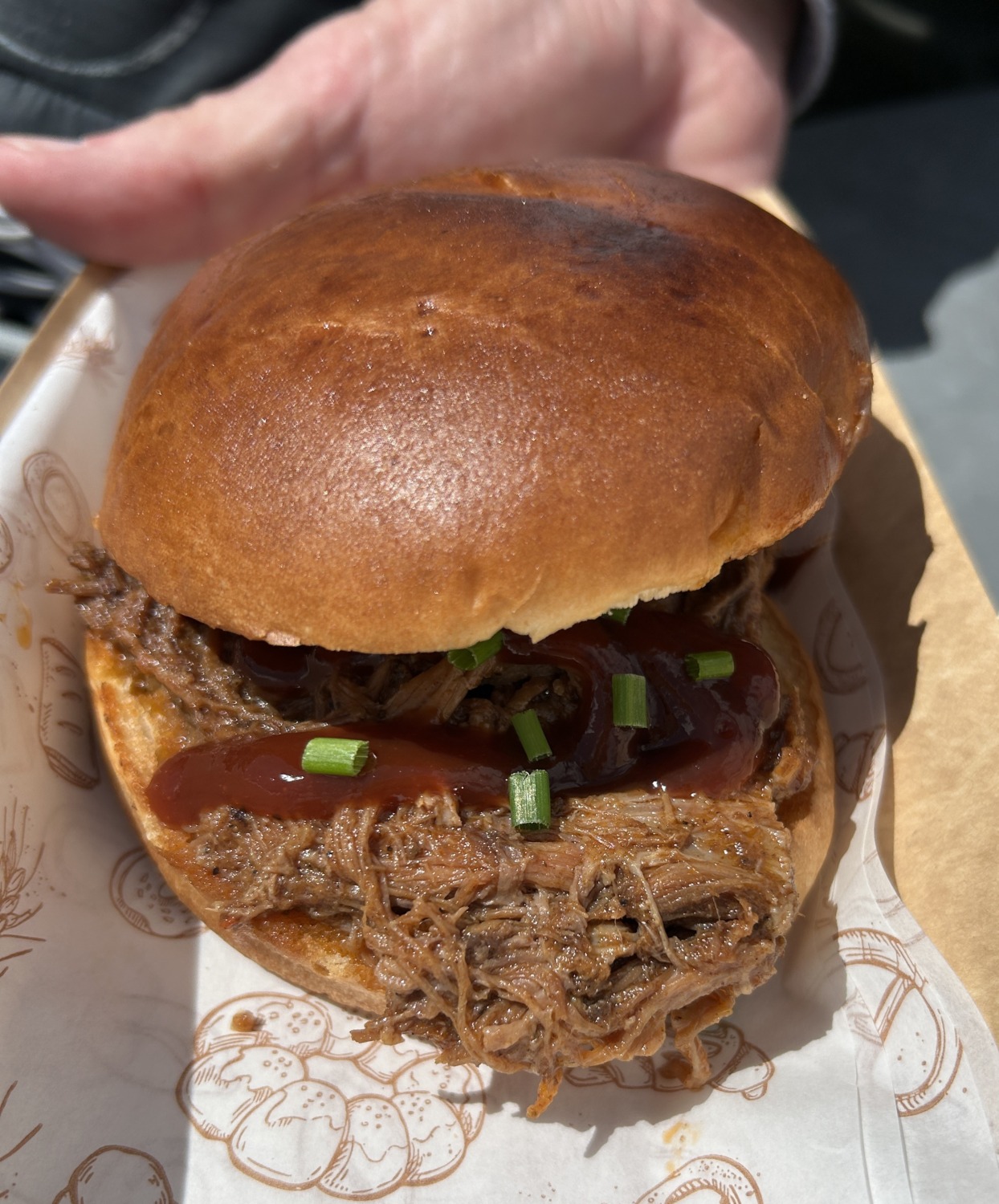
The sandwich was the perfect size to share and was delicious. Just what I wanted. We had so many fries that we shared them with another person from our tour group. The coleslaw was purple and just had mayonnaise as the dressing, but we were still very pleased with our meal.
After lunch our tour group went on a boat tour of Plymouth Harbor. The tour guide pointed out the Royal Naval Yard and gave us some history of the area, including the Mayflower. He said the Mayflower was about the size of the boat we were taking the harbor cruise on! I wouldn’t want to cross the Atlantic on that! It was a beautiful day to be out on the water and I enjoyed the tour very much.
After our harbor tour we could get on the bus and go to the hotel or explore the Barbican some more and walk back to the hotel. It was only a mile back to the hotel (all uphill) so Tom and I elected to stay at the harbor a while longer. We wanted to go to the Mayflower Museum.
The Mayflower Museum is small but very good. We started on the third floor and worked our way down. Each floor had displays and information on the people who sailed on the Mayflower as well as their impact on the local indigenous population. The information on the Wampanoag was told with a lot of additional information from the tribe. The 400th anniversary of the Mayflower was in 2020 and the celebration had to be delayed, which was a disappointment to everyone. But members of the Wampanoag tribe were able to come to Plymouth and the museum in 2021.
After going to the museum, we headed to the Flapjackery, a store that sells flapjacks. I always though flapjacks were pancakes. True in the US. But, after seeing them at lots of stores in England, I discovered they are oatcakes with many different and delicious coverings. The Flapjackery is a small English chain that has a huge variety of oatcakes. Tom loves them because he feels like he is eating healthy while getting in a sweet. They ship overseas! We bought three different flavors because there was a special three for ___ deal. They are very good.
After enjoying our flapjack snack, we headed back up the hill toward the Plymouth Hoe and our hotel. We had to be back in good time because we were going out for a farewell dinner for our tour. Yes, the last night had, sadly, come. All of us boarded the bus at 6 and went to Heskey Mill. It was a two-headed flour mill build around 1700 that had been converted into a restaurant open only to groups.
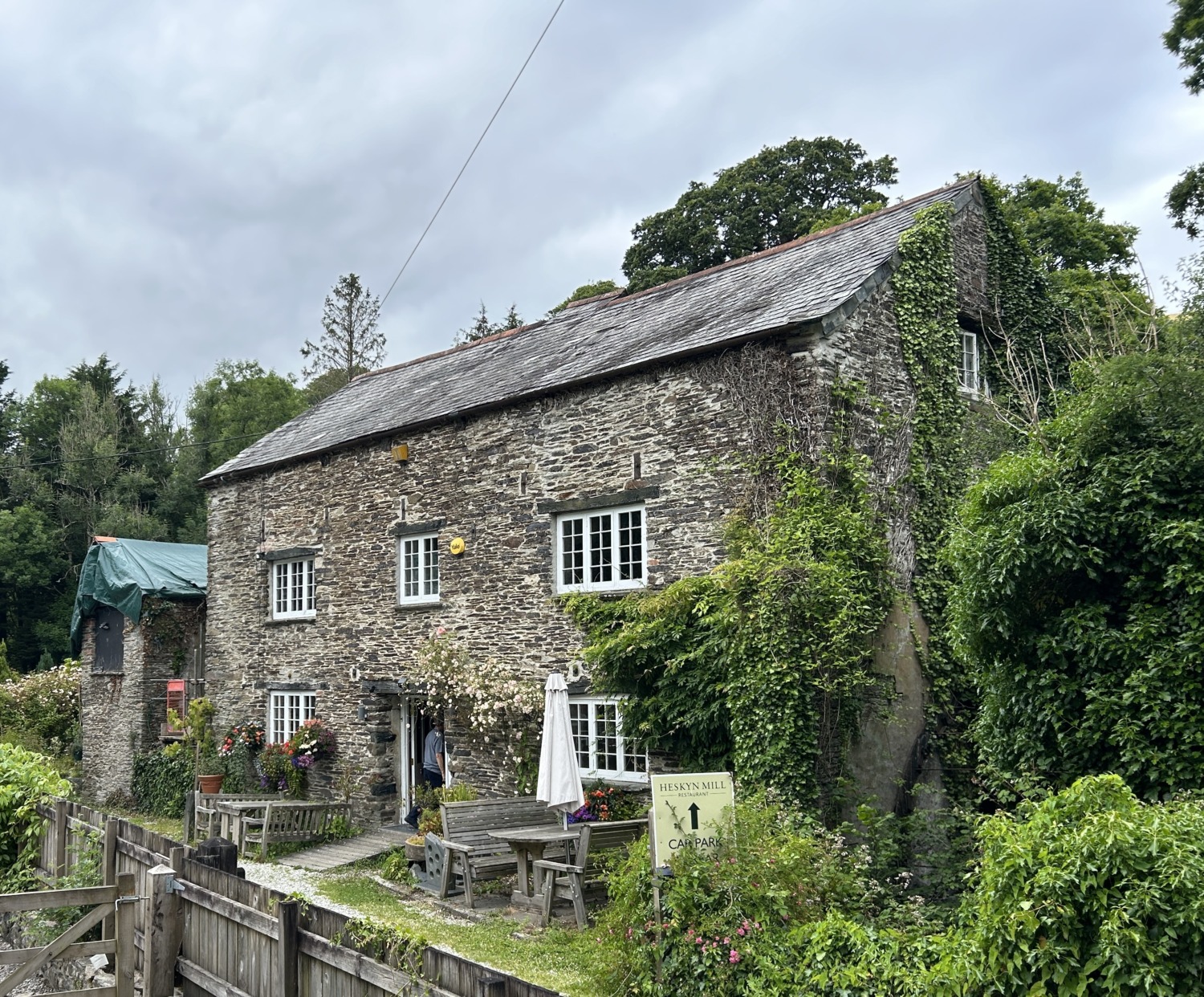
The owner of the mill greeted us and our guide Nigel said a few words. He and Dougie were both wearing ties! I didn’t get the memo it was a dress-up night. Supper was on the first floor. The British call the first floor the ground floor and the second floor is the first floor. It has been pretty confusing in some of our hotels. Some of the hotels have even had lower ground and upper ground. So a room on the third floor is on what we would call the fifth floor in the states. Tom and I just climb the stairs until we find the right room.
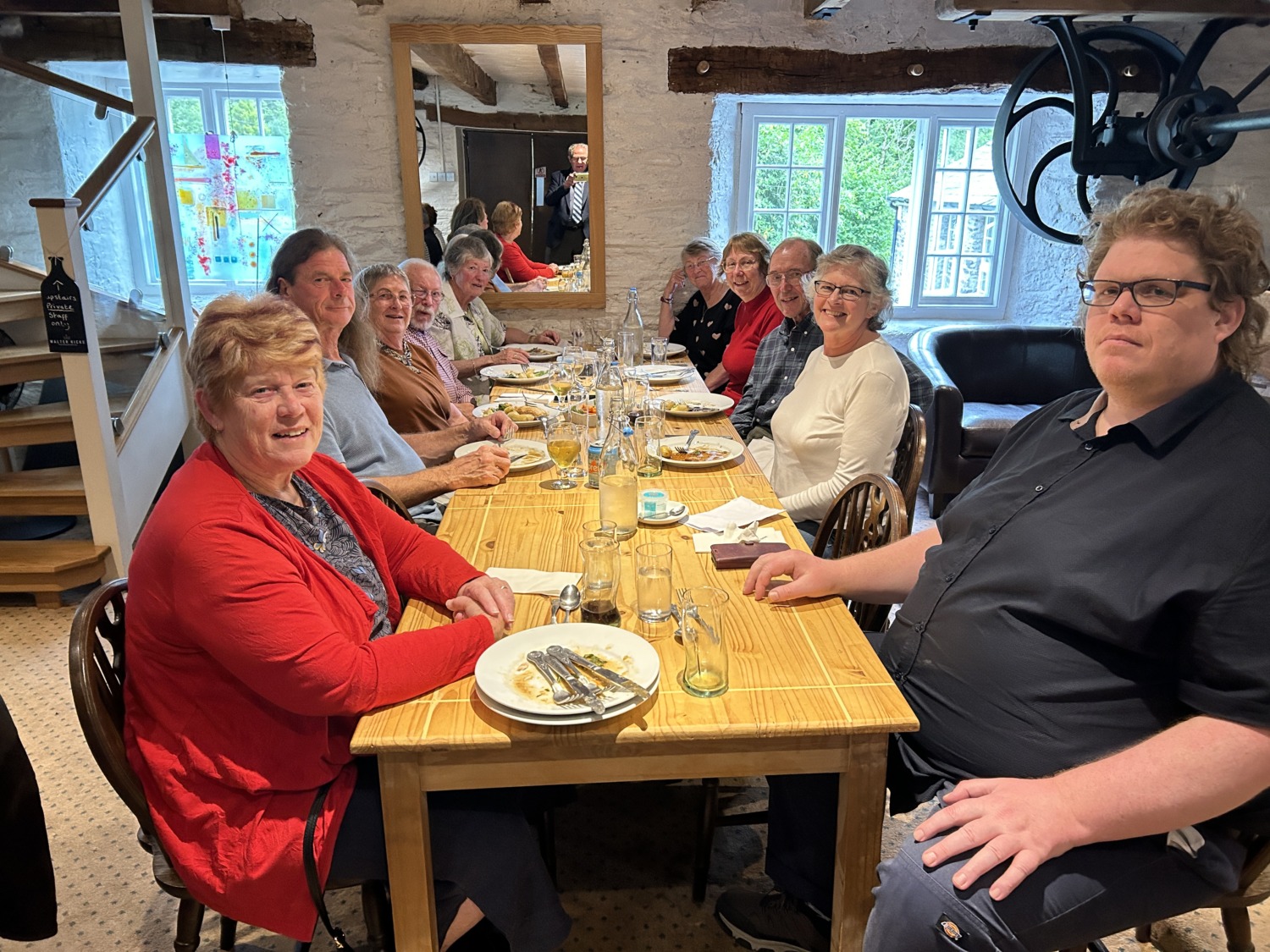
The food for dinner was good and the atmosphere relaxed. We exchanged contact information with a few of our new friends. The tour isn’t allowed to give out any of that information anymore. About 8:45 I couldn’t sit any longer, so I went outside and enjoyed the beautiful summer evening in the remote glen where the mill is located. I saw the spots where the water wheels used to be. Several others trickled out and, finally, everyone came out so we could head back to the hotel.
Stonehenge is still on the agenda for our tour, but after that we head back to London and are on our own. It will be odd not to have the suitcases out by a certain hour every morning or climb on the bus to be driven everywhere. Being on our own will be a bit of a culture shock, but Tom and I are ready for the next part of our trip.

